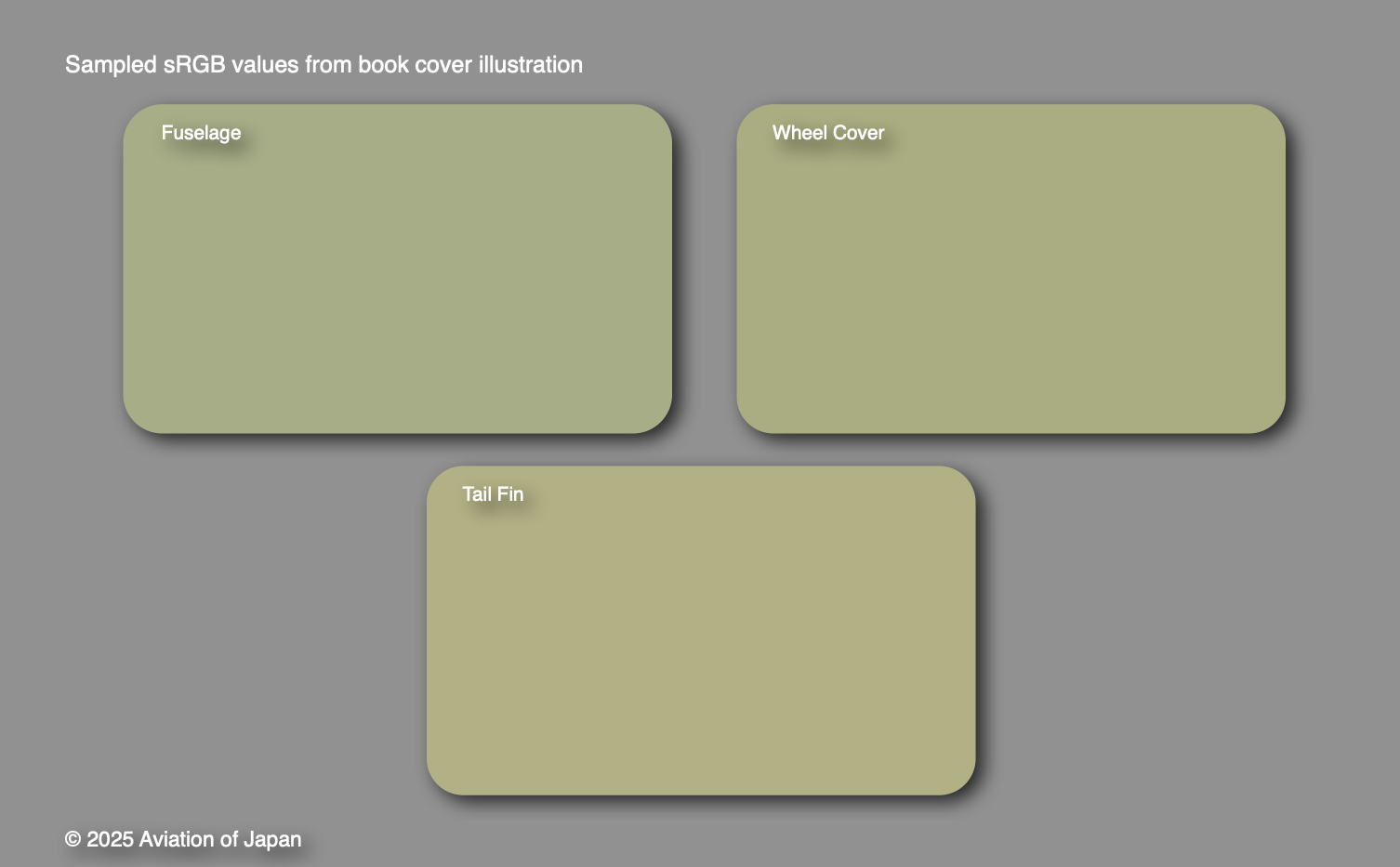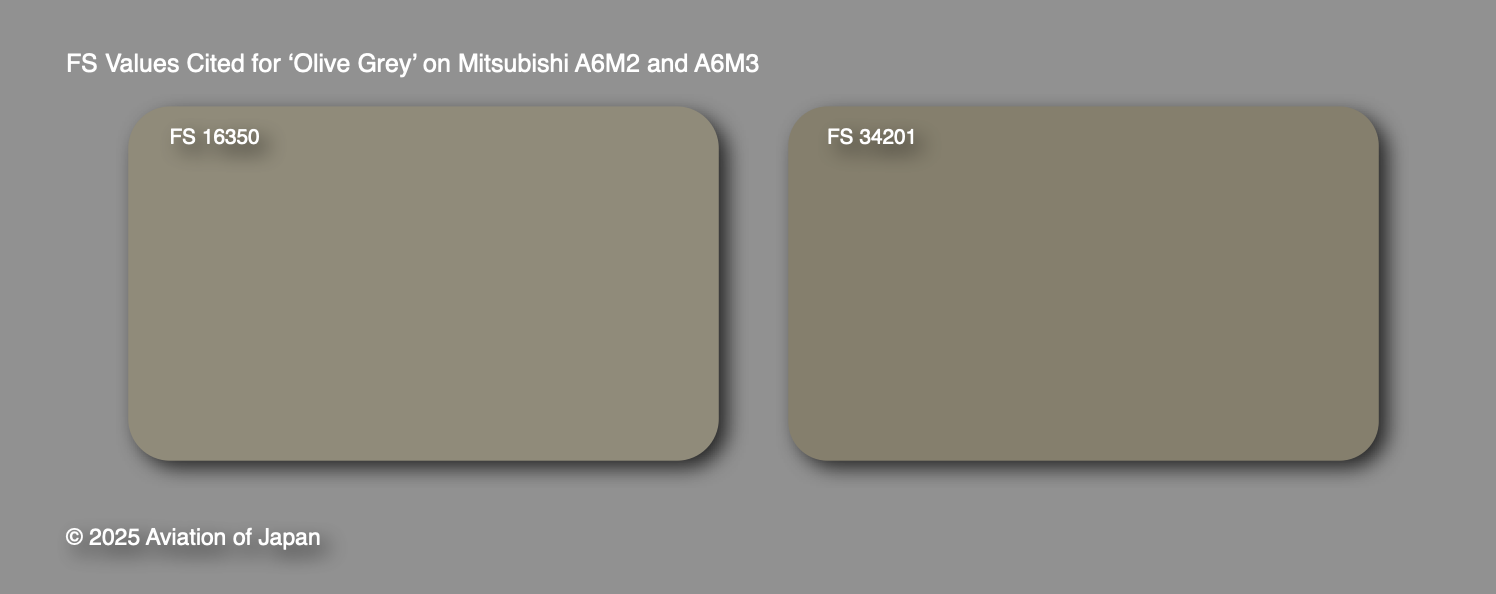Recently Andrew Young kindly sent me the above image from a Facebook page about Zero Fighter Pilots. It is a painting by Tadaichi Hayashi, an artist who visited Rabaul in 1942. I had seen it before as the Japanese book it was taken from - 'Painting under enemy’s bombing raid - sketches painted in Rabaul in combat' was first brought to my attention circa 2000. The image of the book cover is shown below. It is a 'cleaner' and 'cooler' image without the stronger yellowish brown caste of the more recently shared copy.
The Zero in the illustration appears to show a greyish-green colour as once strongly advocated by the late David Aiken, who sometimes asserted that it was the Kariki 117 colour M1. That is unlikely as the Yokosuka camouflage trials for the Zero held in late 1941/early 1942 included one Zero 'Yo-151' specially painted overall in the M1 colour for testing. Had M1 been the existing factory colour that should have been unnecessary. Although the more recent illustration also appears to show a greyish green the actual colour is distorted by the yellowish brown caste of the image. Sampling the fuselage, wheel cover and tail fin from the digital image in sRGB results in the colour values shown below. Leaving aside an accusation of indulging in 'pseudo science' whatever the colour might have been intended to be by the artist (and which appears on the original painting) the illustrations as shown do not suggest a neutral, pure black and white grey, as recently asserted by Messrs Nakamura and Miyazaki.
Sampling the earlier cover image produces results (above) closer to a perception of greyish green, a colour which reflects the description of 'Aotatami-iro' suggested by Hitoshi Yoshimura in Model Art # 179 of March 1981 (pages 38-39). He cited the recollection of a ‘Mr Y’, a civilian who had attended many ‘Houkoku-go‘ dedication ceremonies of early Model 11 and 21 Zero fighters being donated to the IJN. who described their colour as ‘Aotatami iro‘ (青畳色), meaning blue or new/fresh straw mat colour. The appearance of the mats as new is a pale blue-greenish grey colour. This gradually fades towards a more straw yellow colour ‘Furutatami iro’ (古畳色) meaning old straw mat colour, as described by Yoshihito Kurosu in an article in the Japanese Scale Aviation magazine of July 2000. He also stated that several former Zero pilots had described the colour that way and he compared it to RLM 63. However Aotatami-iro appears to be lighter and 'warmer' than that colour which has often been confused with RLM 02 (reference AoJ articles on RLM 02 here and here). The Aotatami colour as seen in that article's colour photograph is somewhat similar but slightly duller than the Sweet and Modelkasten paints intended for the early Zero which appear too pale, too bright and too cool for the subtlety of the real colour. The illustrated colour might seem at a distance from the 'J3 leaning slightly towards ameiro' that some know and love but is really not and compares quite well to the matched swatch of paint colour from the Iida A6M2 brought down at Pearl Harbor.
The late Jim Lansdale regularly cited FS values of 16350 and 34201 as being close to the appearance of the colour on extant paint samples. Those seem dark and brownish compared to the tone typically seen in photographs but the exposed paint strata chalked quite rapidly towards a lighter and more greyish appearance as a result of the majority pigment of anatase form titanium dioxide (white) in the paint. As well as photochemical activity the ambering and darkening effects of thermal ageing* should be taken into account when assessing the appearance of the original paint surface, even on those examples preserved out of light and especially where the chalked strata has been abraded to reveal the underlying strata protected from UV exposure but not from temperatures. The paint beneath the chalked surface will typically darken and yellow slightly, without losing lustre, resulting in a 'browner' appearance than the original paint.
* A long-term, irreversible change in the structure, composition, and morphology of materials with exposure to temperatures
Image credit: Heading illustration Facebook via Andrew Young; Book cover image author; Colour schematics © 2025 Aviation of Japan





10 comments:
And so the debate and hypotheses concerning Zero Colors continue...and I am enjoying every bit of it ...facinating !
Tadaichi Hayashi's artwork is a revelation, as are Nicks's historical notes and detailed synopsis of theories.
Gratitude to Andrew and Nick
Thank you for this article Nick :)
Thank you very much for this one, Nick, and for sharing the drawing with such careful analysis alongside.
The evidence you've presented on Zero colors over many years is there to help modelers and historians make their own assessment. The way this color (the range between 16350 and 34201 inclusive) was suddenly 'disappeared' from newer Japanese historical and modeling literature ignores too much careful and wide-ranging research, and since the blog's beginnings, the best of that has appeared here - thanks for faithfully sharing it.
I was at the Museum of the Pacific War in Fredericksburg Texas this year, and saw once again the souvenired piece of a Zero shot down at Pearl Harbor. It's only one example, granted, but it drew me at 70, standing there with my grandson, just as it did when I first saw it when 13, back when the museum itself could fit in the Nimitz Hotel. Both sides of the metal are visible, and both colors still vivid and striking, the aotake blue of the inner surface...and the color you describe here. You've pointed out that humans can perceive color quite differently, so I can only speak for *my* eyes, but the outer surface - in 1967 and 2025 was / is anything but a neutral grey.
Thank you for another insightful article on Zero paint/coloration Nick. My mind still reels at the possibilities.
If you and others here would indulge me so that I can understand more fully:
- By thermal aging, do you mean aging because of high ambient atmospheric temperatures? Or that area exposed to hot engine exhausts?
- I completely understand the "chalking" from exposure to the sun and weather elements (my mind goes back to a 1965 Chevy pickup we used on our farm whose paint chalked quite badly), but would the underside of the wings and fuselage, which aren't exposed to the sun nearly to the extent of the upper surfaces, not chalk to the same extent?
Hey my friend:)! I've been anxious to see this one for a while now. I know I'm painting my 1/32 Tamiya Type 21 "brown" to match the sample I have from a Type 32 (the one I sent you a sample of) which is VERY well preserved, it even still has its' sheen!
While you're at it could you make a post on the J3 "dope" used for the fabric control surface? A suggested FS color match would be great, I have a Tamiya color mix one posted on J-aircraft.com.
Cheers mate!
Scott Negron
Hi WD, whilst hot engine exhaust will affect paint strata, thermal ageing means long-term change to the structure, composition, and morphology of paint exposed to temperatures typically encountered in service. In the case of Zero artefacts that can relate to, say, their preservation out of light in garages or lofts which are subject to high ambient temperatures. The idea that artefacts preserved out of light won't change is a fallacy as generally the binders in paint will darken and yellow over the years, exacerbated by high ambient temperatures, as with decal varnish yellowing inside kit boxes. Chalking is also exacerbated by high temperatures and humidity but the main catalyst is exposure to UV so the under surfaces of an aircraft may be less affected. And factors such as the type of pigment in the paint will affect the extent of chalking, for example the anatase form of titanium dioxide mentioned. The rutile form of titanium dioxide is more resistant to chalking and was specified in some US paints. The combination of majority white pigment, exposure to UV, high temperatures and high humidity made the 'olive grey' Zero especially prone to chalking. That could be moderated by scrubbing and washing but not entirely prevented. And once the aircraft was abandoned, unmaintained, the exposed paint surface would become dull and almost towards 'white'. But the underlying paint strata, protected by the chalking, would gradually darken and yellow slightly. Regards Nick
Oddly, just a short while ago I came across a video about the manufacture of traditional tatami mats in Japan, from the harvest of the igusa rushes to their assembly into the finished flooring. The video nicely illustrates, I think, the 'Aotatami iro' color of the relatively new mats. In time they fade to the more yellow "straw color". The video can be found on YouTube (of course) here: https://www.youtube.com/watch?v=vKy-Rt4TrNc&t=1404s
Hi Terry, thank you for the link, regards, Nick
Just seeing this article now Nick, as always, thank you for providing us such attention to detail on colors and paints. Greatly appreciated as always!
Dan
as always, very interesting article, thanks Nick
Post a Comment